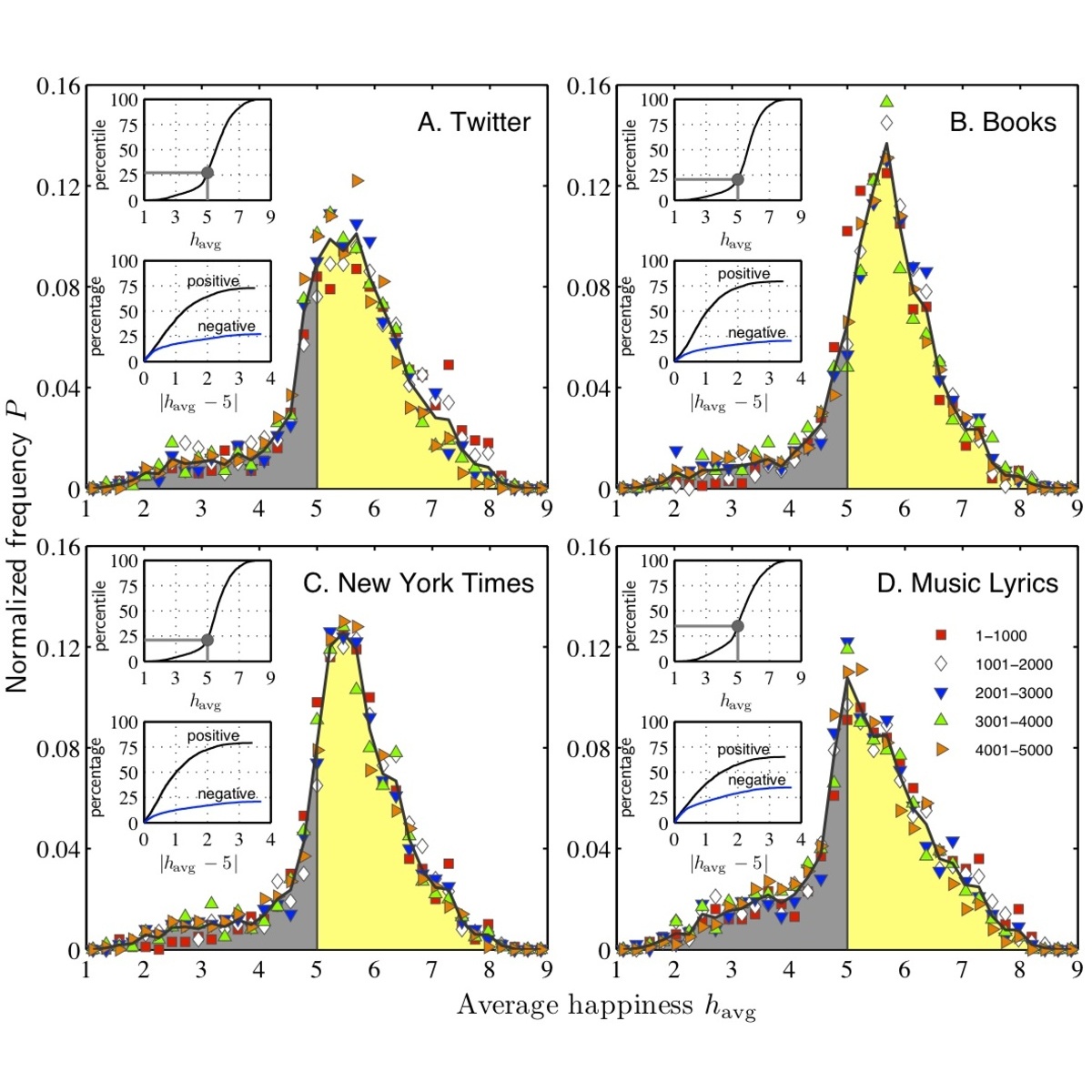Positivity of the English language
I. M. Kloumann, C. M. Danforth, K. D. Harris, C. A. Bliss, and P. S. Dodds
PLoS ONE, 7, e29484, 2012

Times cited: 161
Abstract:
Within the last million years, human language has emerged and evolved as a fundamental instrument of social communication and semiotic representation. People use language in part to convey emotional information, leading to the central and contingent questions: (1) What is the emotional spectrum of natural language? and (2) Are natural languages neutrally, positively, or negatively biased? Previous findings are mixed: suggestive evidence of a positive bias has been found in small samples of English words [1-3], framed as the Pollyanna Hypothesis [3] and Linguistic Positivity Bias [1], while the experimental elicitation of emotional words has instead found a strong negative bias [4]. Here, we report that the human-perceived positivity of over 10,000 of the most frequently used English words exhibits a clear positive bias. More deeply, we characterize and quantify distributions of word positivity for four large and distinct corpora, demonstrating that their form is surprisingly invariant with respect to frequency of word use.
- This is the default HTML.
- You can replace it with your own.
- Include your own code without the HTML, Head, or Body tags.
Extra: The arXiv version is a far superior version to the PLoS ONE paper; please read the latter.
BibTeX:
@unpublished{kloumann2011a,
author = {Kloumann, Isabel M. and Danforth, C. M. and Harris, Kameron D. and Bliss, Catherine A. and Dodds, Peter Sheridan},
title = {Positivity of the {E}nglish language},
note = {Available at \href{https://arxiv.org/abs/1108.5192}{https://arxiv.org/abs/1108.5192}. Accessed October 24, 2011},
key = {language,emotion,evolution,happiness},
year = {2011},
}